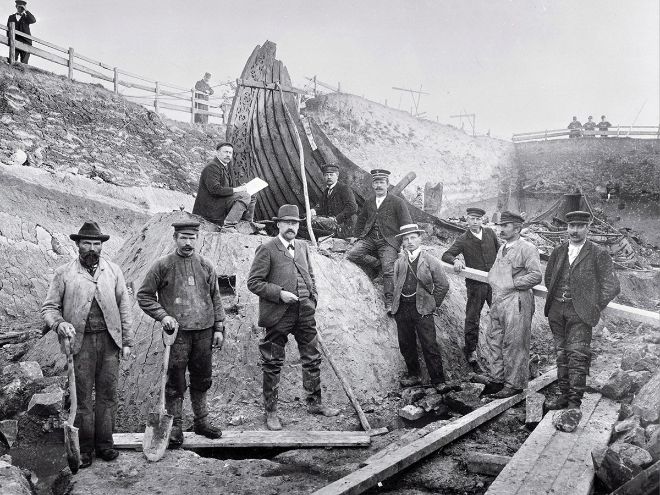In the year 834 CE, two wealthy women died. The Oseberg ship was pulled ashore and used as a burial ship for these two ladies. The Oseberg mound and grave are named after the farm on which they were found, Lille Oseberg in Tønsberg in Vestfold.
The mound was 44 metres in diameter and 2.5 metres high, but may originally have been almost six metres high. It was constructed using turf, which formed a compact, airtight seal over the ship and grave goods. The weight of the burial mound had pressed the ship several metres down into the soft clay subsoil. This, in combination with the compact turf mound, made for exceptionally good conservation conditions, rarely encountered in Norwegian burial mounds. There are only two other known examples that compare with the good conservation conditions at Oseberg: These are the ship burials from Gokstad and Tune.
The excavation caught the public’s interest to such an extent that the site had to be secured with railings and signs. A guard was also hired to ensure that no one disturbed the work or got too close to the finds. The process was thoroughly executed and documented and it is fair to say that it laid the groundwork for how archaeological investigations are carried out in Norway today.
The Oseberg ship was built in western Norway around 820 CE. It is made of oak, with deck and mast from pine.
A burial chamber was built right behind the ship's mast. The dead women were laid out in a bed made with large down quilts. A magnificent tapestry was placed in the chamber. The women were also accompanied by a large quantity of other grave goods. There were personal items such as clothes, shoes and combs, as well as exotic vessels from Ireland or England. There was also ship's equipment, kitchen equipment, farm equipment, three ornate sledges and a work sledge, a wagon, five carved animal heads, extra beds and tents. 15 horses, six dogs and two cows were also found in the grave.
